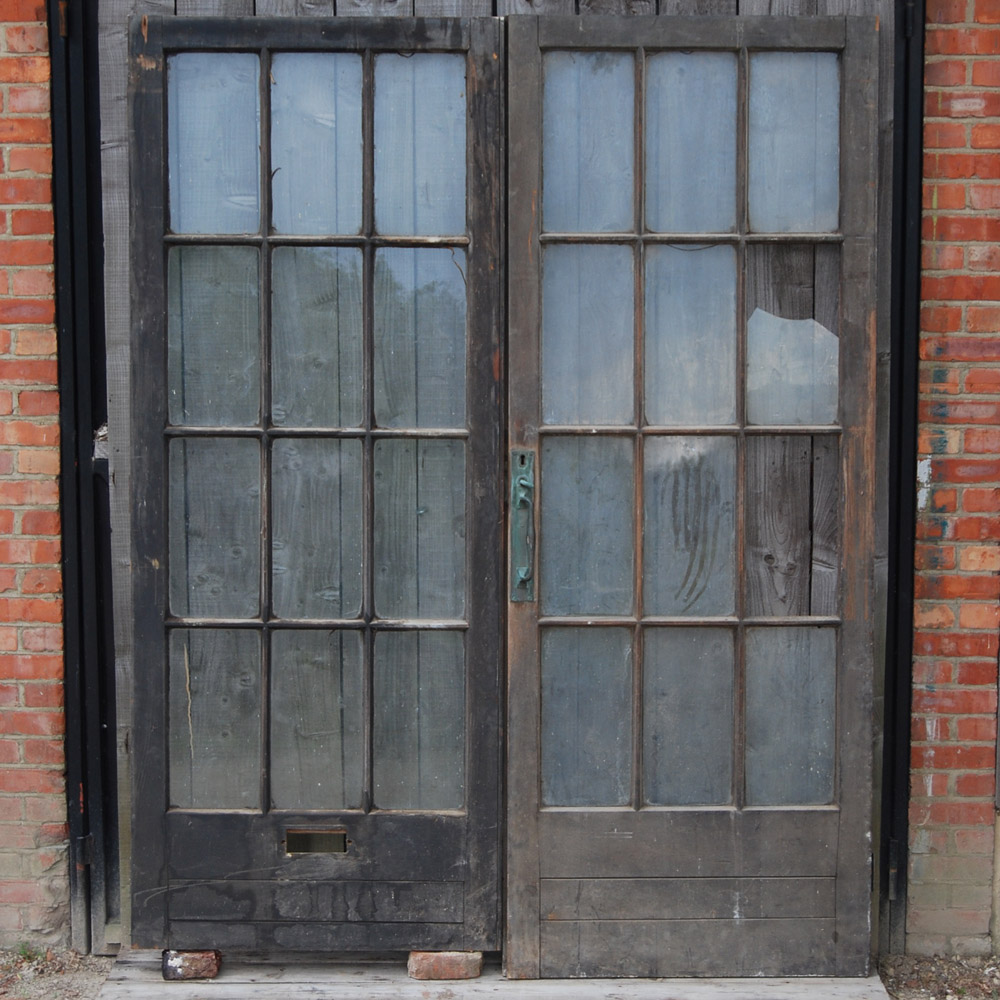No products in the basket.
Archived Stock - This item is no longer available
A pair of Edwardian mahogany glazed entrance doors,
removed from the William Morris Garage, Longwall Street, Oxford
each leaf with fifteen lights and the pair closed with a well engineered brass thumb-latch within a pull,
SOLD OUT
In stock
The Morris Garage at 21 Longwall Street was built in 1909-10 as the Morris Garage, by the architects Tollitt and Lee for Merton College (the landlord) and the Oxford engineer and entrepreneur William Morris. It was on this site in 1912 that the latter assembled the prototype of his first motor car, the Morris Oxford. Production moved to Cowley in 1914, but the building remained in use as company offices (including Morris's personal office) and as a service and distribution centre. It was later used by Blackwell's as a book warehouse. The building was threatened with demolition in the late 1970s, but a campaign to preserve it resulted in the retention of the main facade, behind which a block of student accommodation was built in 1981. The site is now part of New College.
William Richard Morris (1877-1963) rose from humble origins to become the leading British motor manufacturer of his day. Brought up in Oxford, he left school at fifteen and shortly afterwards established his first business, a cycle repair shop run from his parents' house in James Street. In 1901 he set up as a cycle-maker with premises on the High Street, and the following year he moved into motorcycle manufacture, renting from Merton College a set of stables at 100a Holywell Street (immediately behind the present building) for use as his workshop. In 1909 he sold the cycle business and established the Morris Garage. At first he merely sold, hired and repaired cars, but in 1912 he began production of his own Morris Oxford, adopting the more efficient US practice of sourcing parts from external suppliers rather than manufacturing them on site. In 1914 his factory moved to Temple Cowley on the outskirts of Oxford, and after WWI (during which he earned an OBE for manufacturing military equipment) he began producing a second car, the Morris Cowley, whose modest price and great reliability made it a staple of inter-war motoring. By the late 1920s Morris Motors supplied a third of all cars manufactured in Britain. Morris himself, now a multimillionaire, withdrew from direct management of the firm and concentrated on philanthropic schemes, donating a total of £30 million to various medical and educational projects. Created Viscount Nuffield in 1938, he founded Nuffield College, Oxford, established the Nuffield Foundation and endowed the department of medicine at Oxford University. Morris Motors went on to produce the famous MG and Morris Minor cars, eventually merging with Austin Rover in 1952. (From English Heritage Listing)



